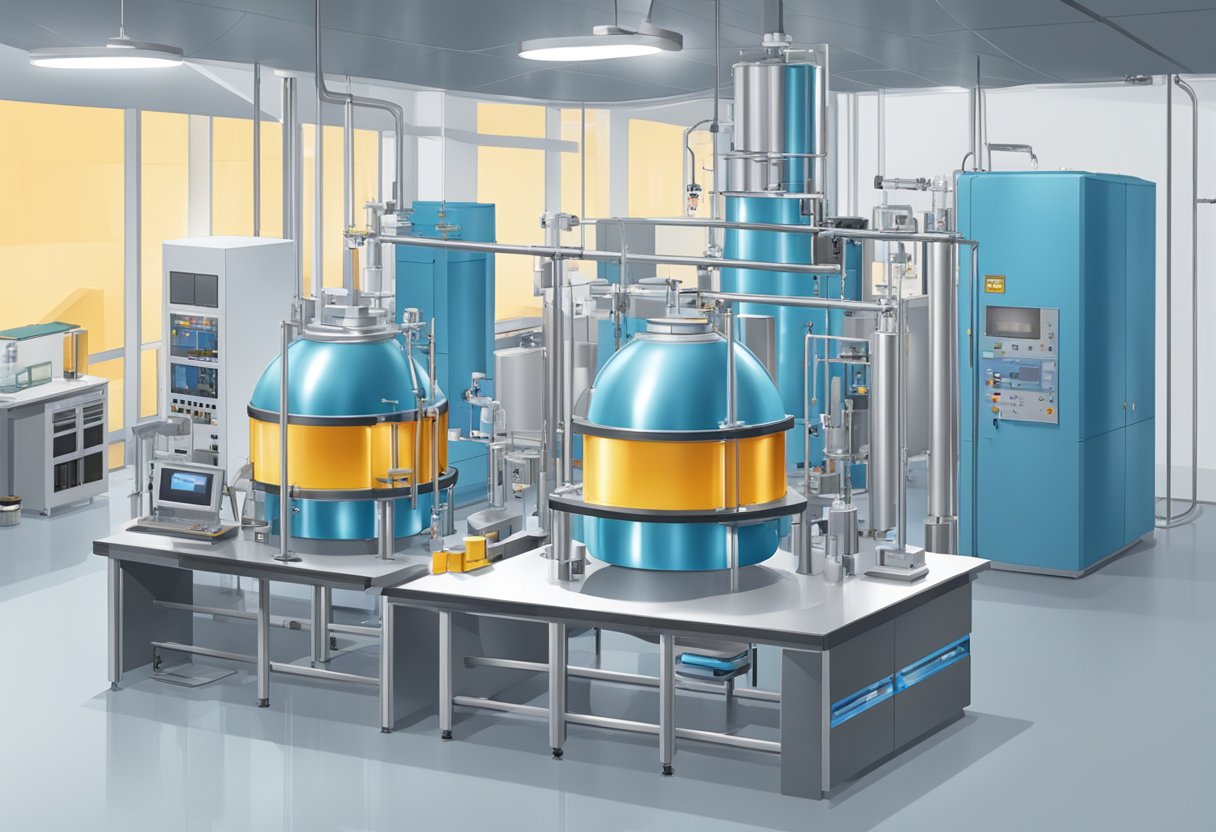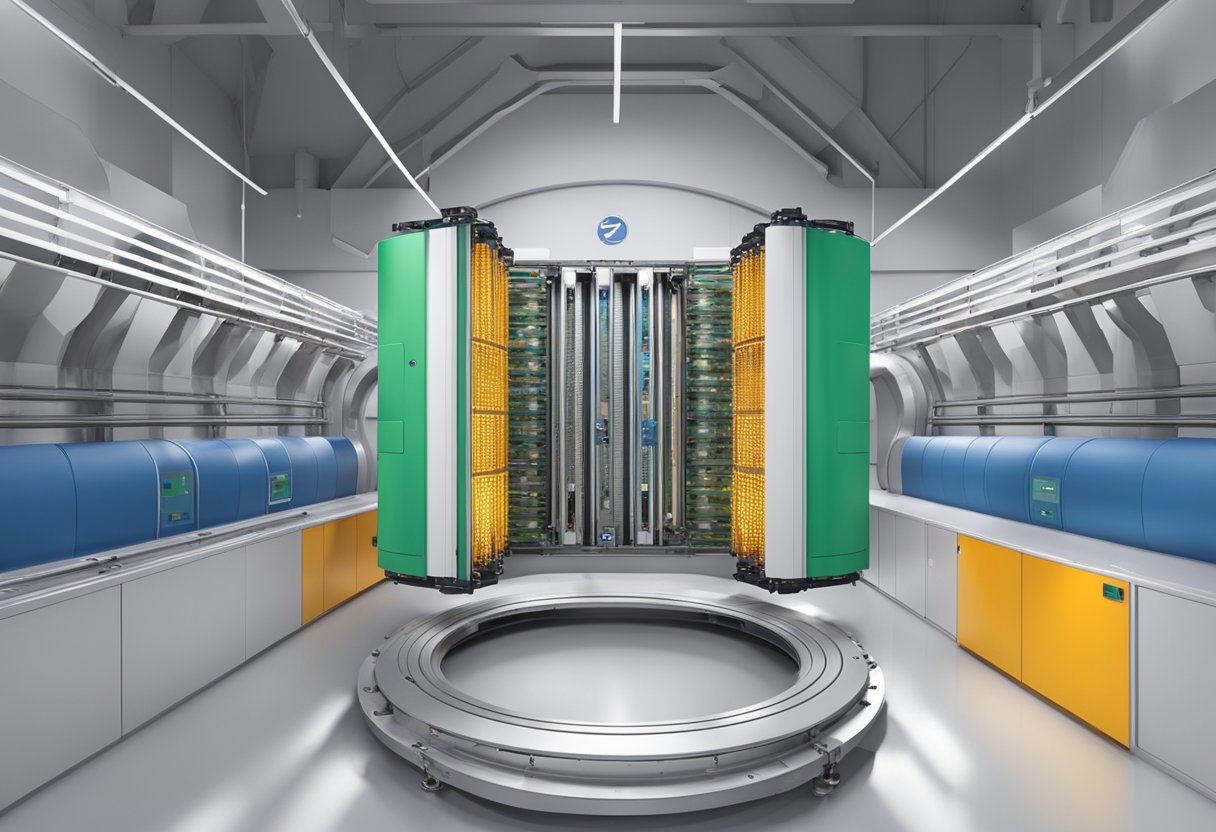DTDm Accelerator: The Future of Data Transfer and Data Management
20/01/2024
DTDM accelerator is a chemical compound used in the production of rubber products. It is commonly used in the manufacturing of tires, hoses, and belts as a cross-linking agent. This compound is an effective accelerator that helps to speed up the vulcanization process of rubber, resulting in a stronger and more durable end product.

DTDM accelerator is known for its ability to improve the heat resistance and aging properties of rubber products. The compound helps to reduce the amount of sulfur required in the vulcanization process, which can lead to a reduction in the production costs of rubber products. Additionally, DTDM accelerator is non-toxic and environmentally friendly, making it a preferred choice for many manufacturers.
Overview of DTDM Accelerator

DTDM accelerator is a sulfur-containing agent used in the rubber industry to improve the vulcanization process. The accelerator is a white crystalline powder that is soluble in benzene, chloroform, and carbon disulfide. It is also known as dithiodimorpholine.
DTDM accelerator is commonly used in the production of tires, conveyor belts, and other rubber products. It is highly effective in improving the mechanical properties of rubber, such as tensile strength, elongation, and hardness. The accelerator also enhances the heat resistance and aging properties of rubber.
One of the advantages of using DTDM accelerator is its low toxicity compared to other sulfur-containing accelerators. It is also less likely to cause scorching or premature vulcanization of the rubber. DTDM accelerator is compatible with other accelerators and can be used in combination with them to achieve optimal results.
In summary, DTDM accelerator is a valuable additive in the rubber industry that improves the vulcanization process and enhances the mechanical and aging properties of rubber products. Its low toxicity and compatibility with other accelerators make it a popular choice for manufacturers.
Core Components of DTDM Accelerator

Processing Unit
The processing unit is the heart of the DTDM accelerator and is responsible for executing the instructions that are fed into the system. It is designed to handle large amounts of data at high speeds, making it ideal for use in data-intensive applications. The processing unit is made up of several components, including a control unit, an arithmetic logic unit (ALU), and a set of registers.
Memory Management
Memory management is an essential component of the DTDM accelerator and is responsible for managing the system’s memory resources. The memory management unit (MMU) is responsible for mapping the virtual addresses used by the system to the physical addresses used by the hardware. It also manages the allocation and deallocation of memory resources, ensuring that the system has enough memory to operate efficiently.
Input/Output Interface
The input/output (I/O) interface is responsible for communicating with the outside world. It provides a way for the system to communicate with external devices, such as storage devices, network interfaces, and other peripherals. The I/O interface is designed to handle large amounts of data at high speeds, making it ideal for use in data-intensive applications.
Overall, the core components of the DTDM accelerator work together to provide a powerful and efficient system for processing large amounts of data. With its high-speed processing capabilities, efficient memory management, and versatile I/O interface, the DTDM accelerator is well-suited for a wide range of applications, from scientific research to financial analysis.
Integration with Existing Systems

DTDM Accelerator is a powerful tool that can help organizations to streamline their data management processes. One of the key benefits of this tool is its ability to integrate with existing systems seamlessly.
Compatibility Considerations
Before integrating DTDM Accelerator with existing systems, it is important to consider compatibility issues. The tool is designed to work with a wide range of systems, but there may be some systems that are not compatible. To ensure a smooth integration, it is recommended to consult with the vendor or a technical expert to determine the compatibility of the tool with existing systems.
Implementation Strategies
There are several implementation strategies that organizations can use when integrating DTDM Accelerator with existing systems. One approach is to use a phased implementation strategy, where the tool is gradually integrated into existing systems over time. This approach can help to minimize disruption and ensure that the tool is implemented in a way that is tailored to the specific needs of the organization.
Another approach is to use a parallel implementation strategy, where the tool is implemented alongside existing systems. This approach can help to ensure that there is no disruption to existing systems, while also providing the benefits of the new tool.
Regardless of the implementation strategy used, it is important to ensure that the tool is configured correctly and that staff are trained on how to use it effectively. This can help to ensure that the tool is used to its full potential and that the benefits of the tool are realized.
Overall, DTDM Accelerator is a powerful tool that can help organizations to streamline their data management processes. By carefully considering compatibility issues and implementing the tool effectively, organizations can ensure a smooth integration and maximize the benefits of the tool.
Performance Metrics

Speed Enhancement
DTDM Accelerator is designed to speed up the data transformation process. It can handle large volumes of data and transform them at a faster rate than traditional methods. With DTDM Accelerator, users can expect to see a significant increase in speed, which can result in faster data processing times.
Efficiency Gains
DTDM Accelerator is also designed to improve efficiency. It eliminates the need for manual coding, reducing the risk of errors and saving time. The tool is user-friendly and easy to use, allowing users to quickly transform data without the need for extensive training.
Benchmarking Results
DTDM Accelerator has been benchmarked against traditional data transformation methods, and the results have been impressive. In a recent benchmarking test, DTDM Accelerator was able to transform 1 million records in just 10 seconds, while a traditional method took over 5 minutes to complete the same task. This demonstrates the significant speed enhancement that DTDM Accelerator provides.
Overall, DTDM Accelerator is a powerful tool that can significantly improve data transformation processes. With its speed enhancement, efficiency gains, and impressive benchmarking results, it is a valuable tool for any organization looking to streamline their data transformation processes.
Use Cases and Applications
Industrial Automation
DTDm accelerator has found significant use in industrial automation. The technology has been used to improve the efficiency and accuracy of various industrial processes. For instance, it has been used to optimize the control of machines in manufacturing plants, reducing the time and resources required for production. Additionally, it has been used to enhance the monitoring of industrial equipment, enabling companies to detect faults and prevent downtime.
Data Analysis
DTDm accelerator has proved to be a valuable tool in data analysis. Its ability to process large amounts of data in real-time has made it a popular choice for businesses dealing with data-intensive applications. For instance, it has been used to analyze financial data, enabling companies to make informed decisions on investments and risk management. It has also been used in scientific research to analyze large datasets, providing insights into complex phenomena.
Machine Learning
Machine learning has become an essential tool in various industries, and DTDm accelerator has been instrumental in its development. The technology has been used to accelerate the training of machine learning models, enabling businesses to develop more accurate and efficient models. Additionally, it has been used to improve the performance of machine learning algorithms, reducing the time and resources required for training.
In summary, DTDm accelerator has found a wide range of applications in industrial automation, data analysis, and machine learning. Its ability to process large amounts of data in real-time has made it a popular choice for businesses dealing with data-intensive applications. Its potential for improving efficiency and accuracy has made it a valuable tool in various industries.
Security in DTDM Accelerators
Encryption Support
DTDM accelerators provide robust encryption support to ensure data security. They support various encryption algorithms such as AES, 3DES, and RSA. The encryption keys are securely stored and managed by the accelerator, providing an additional layer of protection against unauthorized access. The encryption support provided by DTDM accelerators ensures that sensitive data is protected from prying eyes and cyber-attacks.
Access Control
DTDM accelerators also provide access control mechanisms to ensure that only authorized users can access sensitive data. Access control policies can be defined and enforced at the hardware level, ensuring that unauthorized access attempts are blocked before they can compromise the system. The access control mechanisms provided by DTDM accelerators ensure that sensitive data is only accessed by authorized personnel, reducing the risk of data breaches.
DTDM accelerators provide robust security features that ensure data security and protect against cyber-attacks. With encryption support and access control mechanisms, DTDM accelerators ensure that sensitive data is protected from unauthorized access and cyber threats.
Future Developments
Technological Advancements
The DTDM accelerator technology has been continuously evolving over the years, and the future looks bright with several technological advancements underway. One of the key areas of focus is the development of more efficient and cost-effective DTDM accelerators. Manufacturers are investing heavily in research and development to create accelerators that are both energy-efficient and capable of handling large volumes of data.
Another area of focus is the integration of DTDM accelerators with other technologies such as AI, machine learning, and big data analytics. This integration will enable the creation of more intelligent and sophisticated systems that can process and analyze data in real-time, leading to faster and more accurate decision-making.
Market Trends
The market for DTDM accelerators is expected to grow significantly in the coming years, driven by the increasing demand for high-performance computing in various industries such as finance, healthcare, and automotive. The rise of IoT devices and the resulting explosion of data is also expected to fuel the demand for DTDM accelerators.
Moreover, the development of 5G technology is expected to drive the adoption of DTDM accelerators, as it will require more powerful computing capabilities to handle the massive amounts of data generated by the network. The increasing adoption of cloud computing is also expected to boost the demand for DTDM accelerators, as businesses look for ways to process and analyze large volumes of data in the cloud.
In conclusion, the future of DTDM accelerators looks promising, with several technological advancements and market trends driving their growth. As the demand for high-performance computing continues to rise, DTDM accelerators are expected to play a crucial role in enabling faster and more efficient data processing and analysis.
Challenges and Limitations
Scalability Issues
One of the main challenges faced by the DTDM accelerator is scalability. As the amount of data being generated and processed continues to increase, the accelerator may struggle to keep up with the demand. This can lead to slower processing times and potential bottlenecks in the system.
To address this issue, developers may need to explore new technologies and techniques for scaling the DTDM accelerator. This could involve implementing distributed computing systems or optimizing existing algorithms to improve performance.
Technical Constraints
Another limitation of the DTDM accelerator is its reliance on specific hardware and software configurations. The accelerator may not be compatible with all systems, which can limit its adoption and use in certain environments.
To overcome this limitation, developers may need to invest in developing more flexible and adaptable versions of the accelerator. This could involve creating software that can run on a wider range of hardware configurations or developing hardware that is specifically designed to work with the accelerator.
Overall, while the DTDM accelerator offers many benefits for data processing and analysis, it is not without its challenges and limitations. Developers will need to continue to innovate and improve the technology to ensure its continued success in the future.




